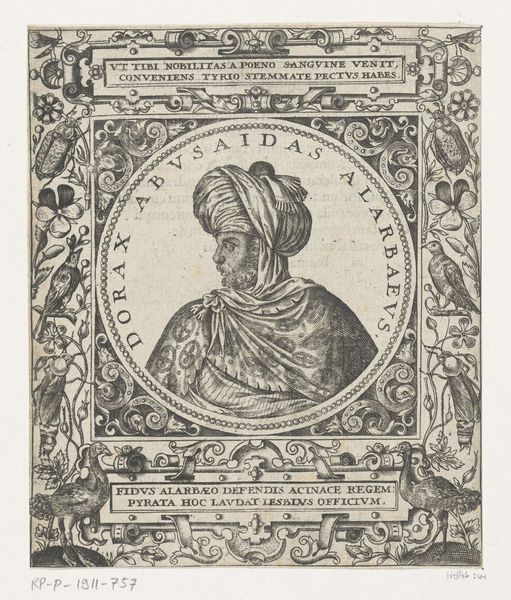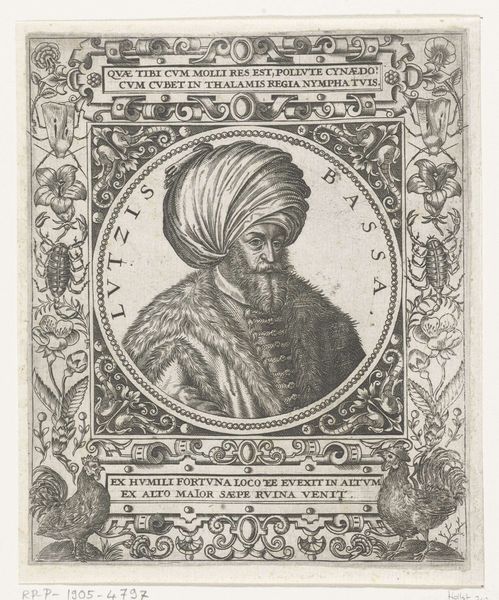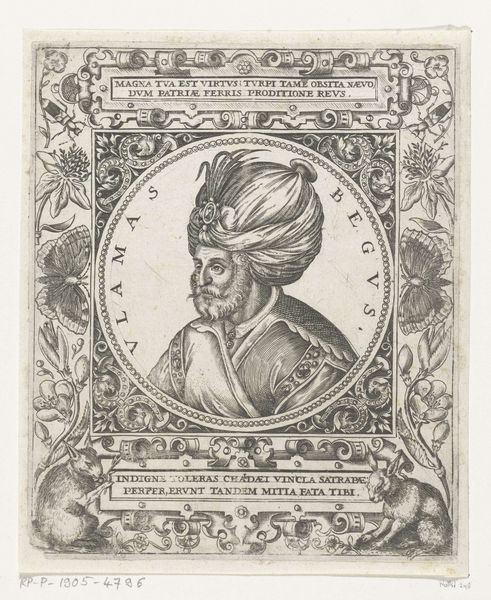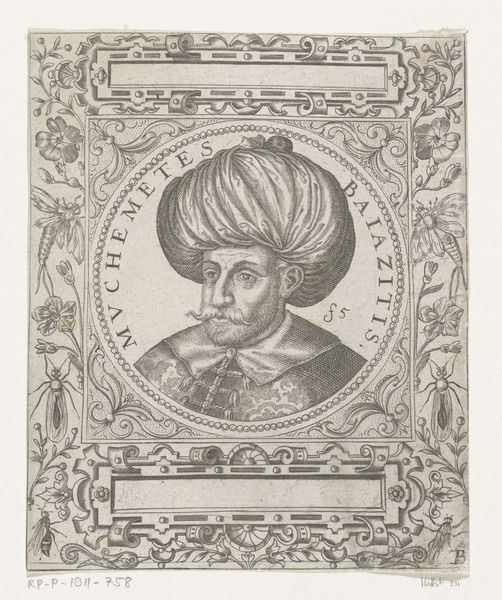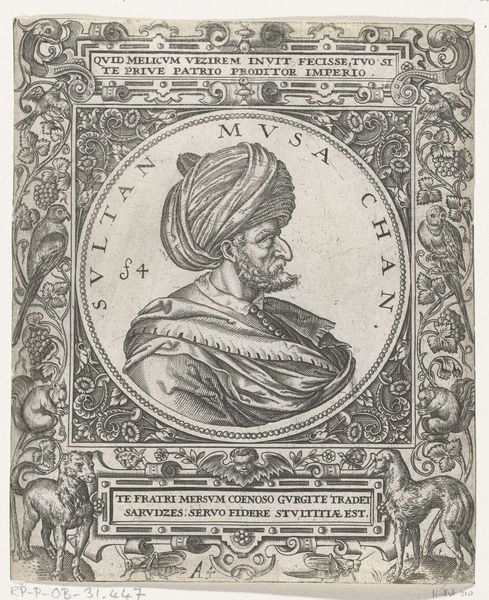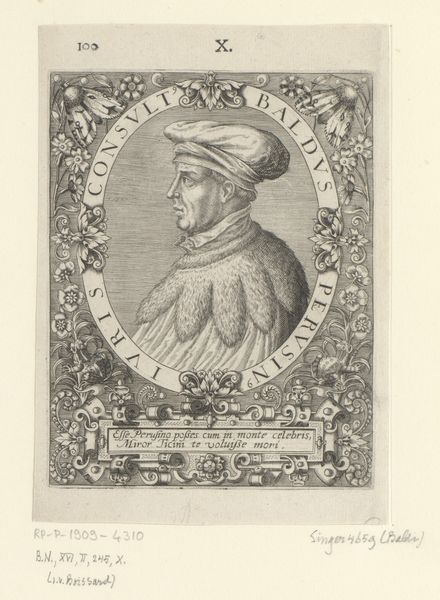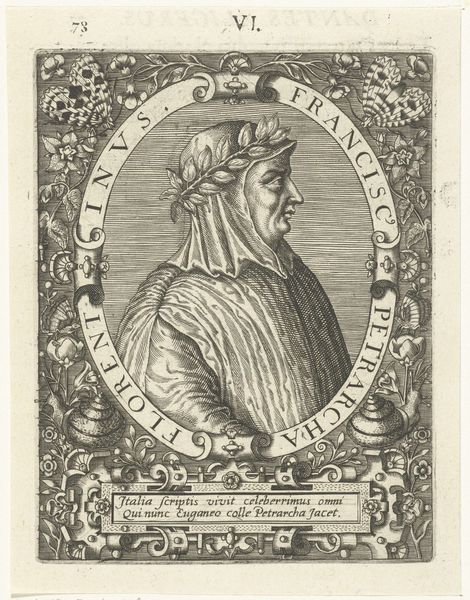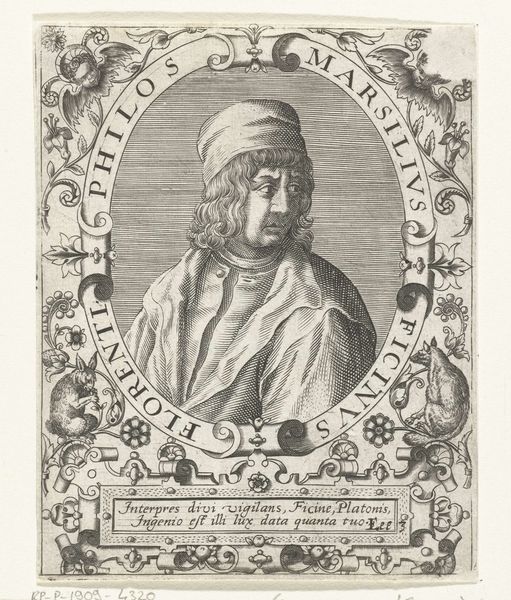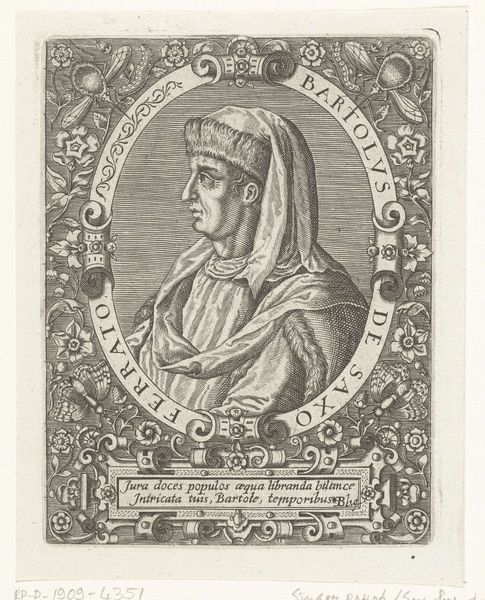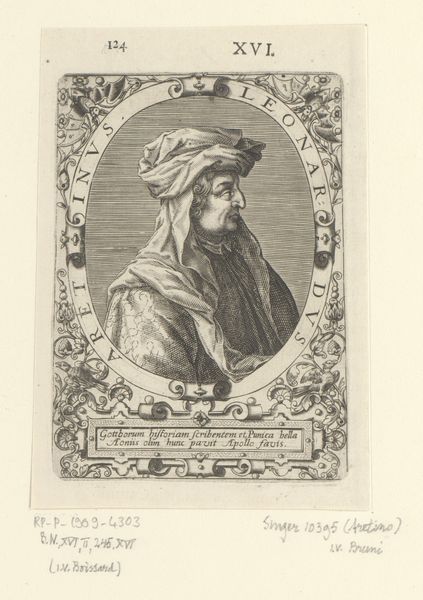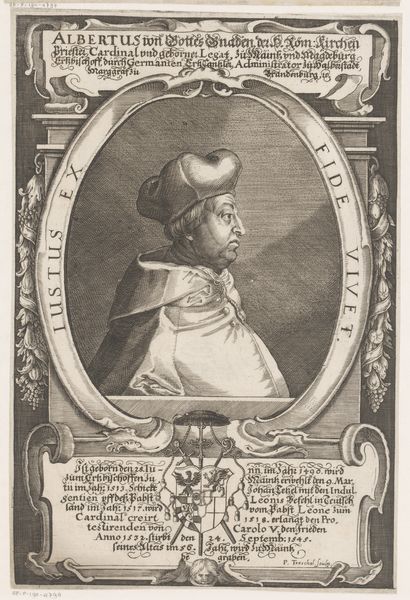
print, engraving
#
portrait
# print
#
old engraving style
#
figuration
#
11_renaissance
#
limited contrast and shading
#
line
#
islamic-art
#
history-painting
#
engraving
#
intricate and detailed
Dimensions: height 154 mm, width 133 mm
Copyright: Rijks Museum: Open Domain
Editor: This is a print titled "Portret van de sultan Mustafa Basha," created in 1596 by Theodor de Bry. It’s currently held at the Rijksmuseum. It strikes me as incredibly detailed; every line seems purposeful. How do you interpret the imagery at play here? Curator: The imagery is rich, drawing from a fascinating crossroads of cultures. Consider the figure himself – Mustafa Basha, a prominent Ottoman leader, framed by a distinctly European mode of portraiture. The artist uses this juxtaposition to explore the "Other," casting the Sultan within a symbolic framework understandable to a European audience. Editor: So, it's about understanding someone through existing cultural symbols. But what symbols stand out to you in particular? Curator: The elaborate turban, for example, is both a literal depiction of Ottoman fashion and a symbolic marker of power and exoticism. The floral motifs within the border, while seemingly decorative, hint at the riches and abundance associated with the Ottoman Empire in the European imagination. Even the Latin inscriptions contribute by situating the Sultan within a familiar, classical context. Notice how the frame depicts natural elements such as birds, sheep, flowers - things considered as elements from paradise at the time... almost framing the sultan like he belongs in paradise. Editor: That's a great point, the bordering motifs never occurred to me that way! So the frame does more than simply decorate; it contextualizes the image. Curator: Precisely! And raises complex questions about how different cultures perceive and represent each other through potent visual symbols and words. This was a crucial era of cross-cultural engagement— and, more often than not, misinterpretation. Editor: I hadn't considered the dialogue between artistic traditions. I now see this portrait as a fascinating intersection of power, representation, and cultural exchange rather than just a historical likeness. Curator: Indeed! Images often contain a wealth of untold stories.
Comments
No comments
Be the first to comment and join the conversation on the ultimate creative platform.
